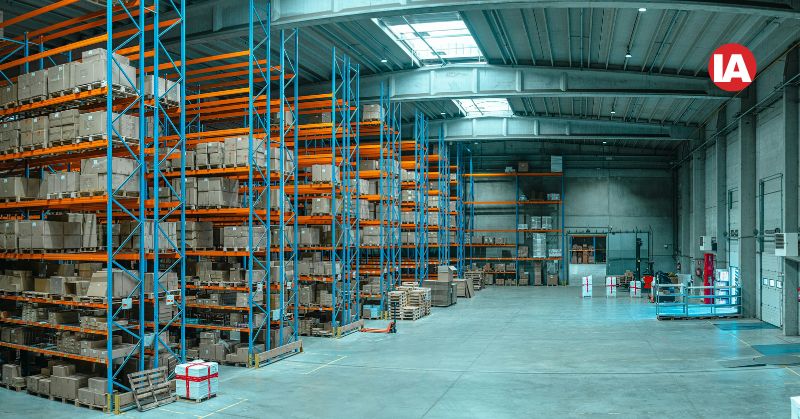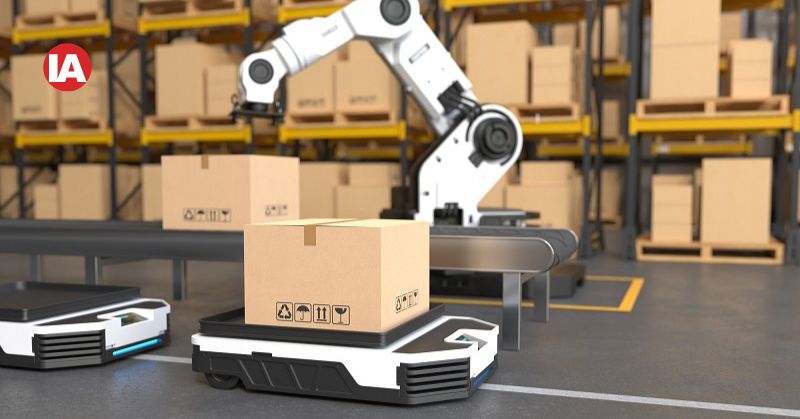Jan 31, 2025
Robotics Automation in Quick Commerce
Quick commerce warehouses operate with minimal or no human intervention, leveraging robotics and automation to streamline order processing, inventory management, and quality inspection. Rahul Dhinakaran explores how integrating robotic systems—like gantry-mounted arms, vision-based automation, and AI-driven inventory tracking—can enhance efficiency, reduce costs, and improve scalability for companies like Blinkit, Zepto, and Bigbasket in India's fast-growing quick commerce industry.
![[object Object]](https://admin.industrialautomationindia.in/storage/articles/article-mKEcqm5AE3laO54oPftGaRuZEOopQioTFiNuutV1.jpg)
Rahul Dhinakaran elaborates upon how quick commerce warehouses function without human intervention or minimal intervention.
Quick commerce is a concept which is unique to India, at least for now. Quick commerce is defined by getting groceries, electronics items, snacks, household essentials within a span of 5 to 20 minutes, depending upon your service provider and location. Most major cities in India have been using this system quite extensively with Tier-2 and Tier-3 cities starting to join in.

material handling. Image source: Unsplash
Quick commerce usage for a customer usually starts with downloading an app, giving your address, selecting the items from the menu, making payment and getting the items in 5-20 mins. It is a very simple and highly precise system for a customer.
But what happens at the back-end of these apps? Receiving an order from the cloud, the warehouse closest to your location gets your order packed, the package picked by a delivery person who then drives all the way from the warehouse to your home or preferred location.
The warehouse or dark stores, as they are called, is the single most important entity in this operation. It can be compared to an automobile assembly plant where automobiles are built in the Just-In-Time philosophy, i.e., the showroom receives an order and transfers it to the factory which then starts assembling the automobile. But that’s where the similarity stops!
Almost all mass manufacturing industries utilise a tonne of robotic systems and/or poke-yoke systems coupled with machines with some manual intervention to ensure the automobile or mass manufactured product is assembled with utmost precision and engineering specifications. The whole factory works as a single, highly maintained machine with zero chaos whilst churning out complex automobiles consistently. That is, after Henry Ford pioneered the assembly line and the automotive manufacturing world started following the Toyota Way.
How was it before Henry Ford’s assembly line and robotics automation found a way into these factories? Automobiles were highly exclusive and expensive, assembled manually, some parts manufactured in manual machines thereby ensuring every automobile was almost always NOT similar to the next one.
Automotive manufacturers had to deal with attrition, labour issues, dangerous manufacturing processes, etc. Enter robotic systems which couldn’t be bothered with fatigue, attrition, etc.
Quick commerce warehouses, although much smaller than automotive factories, face the same challenges. Attrition, fatigue, are all part of the everyday challenges faced by the quick commerce companies and with quick commerce becoming a 24x7x365 industry, this is bound to grow…unless addressed by automation.

image by user6702303 on Freepik
Robotics automation is yet to find its way into these quick commerce warehouses in a big way despite the need being clear. The reasons are multiple, cost of operation is a primary reason and probably the most decisive, warehouses being too crowded and small to accommodate the existing, large articulated robotic system designs and the industry itself being too new and finding its feet in the industrial eco-system despite finding immediate acceptance with the public.
What are the warehouse operations in quick commerce and how can they be automated? A general quick commerce warehouse deals mainly with receiving the customer order, selecting the SKUs in the order, packing them and keeping them ready for the dispatch rider. There are some salient or non-delivery processes which are equally critical like inventory management and quality inspection. Again, very similar to manufacturing industries. Being an automation machine designer for 21 years, my philosophy for automation of any product line is that the product and the work area should be designed to accommodate automation. Automation shouldn’t be shoehorned into an existing facility and manufacturing process, this is actually a much more complex and expensive process.
Robotics systems, in their current form, can find their way into almost all the quick commerce warehouse operations with some modifications as these robotic systems have evolved on factory floors and not inside dark stores. Employee discipline, maintenance methodologies, the eco-system as a whole inside these warehouses is at a very nascent level.
My ideal scenario would be to design a warehouse keeping in mind robotic system automation, from space, to shelves to lighting, to maintenance access (a point often overlooked even in manufacturing industries), etc.
How would such an ideal warehouse receive and deliver the orders?
1. Let us consider the warehouse to be completely equipped with state of the art robotic systems, from high speed gantry systems to articulated robotic arms.
2. Shelves for storing SKUs are designed for robotic arms to pick items easily in FIFO method.
3. Robotic arms mounted on high speed gantry systems are designed to move around these shelves with access to picking SKUs.
4. Multi-functional gripping systems are mounted on these robotic arms to pick and place SKUs from shelves onto bags/containers/crates with no damage.
5. CNC machine type fixtures for multiple grippers on a single robotic arm can be made to ensure different grippers for different SKUs.
6. Once SKUs are picked they are placed onto the required container which can be a custom box or crate for holding orders of various customers.
7. There is an end of line automation, where the crate or box with the order is offloaded from the gantry onto a common collection center.
8. The final pick up and delivery to customer can be a standalone system, it can be via manual rider, drone or even AGV with LiDAR.
Non-delivery related processes are, most generally, inventory management and quality inspection. Both these processes usually rely on vision-based techniques coupled with automation to solve their problems. For our ideal warehouse let’s consider the following techniques.

1. Inventory management can be done by taking count while stacking the SKUs using the same robotic arm plus gantry system.
2. A custom tray with SKUs arranged for easy picking of the arm needs to be coupled with the arm movement.
3. A camera on the robotic arm will be used for identifying SKUs and positioning them correctly in their respective shelves.
4. The camera can have a local image processing unit or cloud based depending upon the network speed and available budget.
5. Quality inspection, especially for fruits and vegetables, will be done before stacking using manual or similar vision based automation systems.
6. If there is regular QC required then a camera mounted either on a drone or the gantry can be used for visual inspection of SKUs. The image processing algorithm can handle the requirements for an SKU being Acceptable or Reject. The gantry or the drone can hover over each shelf to make sure the camera gets the required image.
Theoretical order flow in a completely automated warehouse. From the customer's order receipt to the package being ready for pickup by the delivery person.
Conclusion
The idea of the above writeup is to provide a system where a quick commerce warehouse functions without human intervention or minimal intervention. Comparison with manufacturing factories is to provide examples of much more complex processes being automated and running successfully for years. With rising labour costs and attrition levels automation in such warehouses has become a necessity. Quick commerce, as an industry, is here to stay hence the sooner such technologies become part of the ecosystem the easier it would be for companies like Blinkit, Zepto and Bigbasket to survive in this highly competitive market. Automation helps companies like Ford, Toyota, General Motors reduce their product costs, eliminate quality issues and ensure the customer gets benefited from automation. The same can be done for the quick commerce industry.
Rahul Dhinakaran, Head – Industrial Automation at Bigbasket, is a machine designer/builder since 2004 with 4 patent publications and one publication in Elsevier. He specialises in electromechanical system design with IoT connectivity. Since 2004 Rahul has been working on everything from racing cars to pick and place robots to lifestyle outdoor products to IoT based smart shopping carts, with end-to-end hands-on experience of conceptualisation, detail design and building of a variety of machines.
_____________________________________________________________________________________________
For a deeper dive into the dynamic world of Industrial Automation and Robotic Process Automation (RPA), explore our comprehensive collection of articles and news covering cutting-edge technologies, robotics, PLC programming, SCADA systems, and the latest advancements in the Industrial Automation realm. Uncover valuable insights and stay abreast of industry trends by delving into the rest of our articles on Industrial Automation and RPA at www.industrialautomationindia.in
